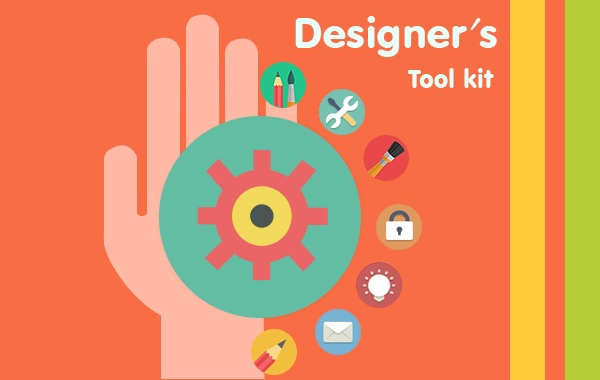Is Learner Engagement In Online Learning Easy?
A study by Columbia University revealed that only about 15% of learners who enroll in online courses actually complete them. [1] Surprising or shocking? Both. Despite the convenience and flexibility of online learning, keeping learners engaged and motivated is still a challenge. So, what can the L&D departments and trainers do?
In this article, I'll share 5 proven ways to ensure learner engagement in online learning, with a bonus tip as well. Let's begin!
5 Ways To Ensure Learner Engagement In eLearning
Create Interactive Content
In online learning, it is the content that speaks, interacts, and engages. So, whether your learners will consume information passively or actively engage in the learning process solely depends on the content. Therefore, creating interactive content to ensure learner engagement is integral.
To do so, you can leverage multimedia elements, eLearning interactivities, and interactive assessments. Different types of multimedia assets are images, audio, animations, videos, infographics, etc. They help engage learners with different learning styles, ensuring better completion rates and maximum training ROI.

eLearning interactivities provide learners with opportunities to interact and actively engage with the learning material instead of passively consuming the information, thus promoting attention and engagement levels.
Foster Collaborative Learning Spaces
According to a survey by Eduflow, over 80% of L&D practitioners believe that collaborative learning is essential for an organization's effectiveness. [2] It not only builds a sense of community but also provides an opportunity for learners to learn from their peers' diverse perspectives and experiences.
You can leverage synchronous and asynchronous methods to encourage your learners to interact with each other. This includes discussion forums, virtual group projects, online whiteboards, breakout rooms, peer reviews, etc. Moreover, you can choose the type of collaboration based on the group size and activity. It can be peer-to-peer interaction or group collaboration.
However, collaboration doesn't always have to be topic-related. Rather, you can make use of various icebreaker activities to promote coordination, cooperation, and understanding among the learners. Check out the infographic below to see a few examples of icebreaker activities.

Personalize Τhe Content
When it comes to ensuring learner engagement and effectiveness in online learning, offering generic learning material is no match for customized, personalized content. Every learner has their unique goals, interests, and learning preferences. Personalizing the content goes a long way in ensuring effectiveness and learner engagement.
It boosts learner satisfaction, motivation, productivity, and efficiency. You can craft personalized learning pathways based on learners' interests, experience, knowledge levels, past performance, etc. It is important to assign employees learning courses that align with their learning objectives. It helps them grow and succeed in their professional life.
Provide Timely Αnd Constructive Feedback
Whether it's online learning or face-to-face learning, feedback is the backbone of effective and successful training programs. Try to keep the feedback specific, actionable, and encouraging. Positive reinforcement goes a long way in motivating learners to improve their performance, boost confidence, and stay engaged in the learning process.
As much as it matters how the feedback is given, it is also crucial when the feedback is provided. Thus, the concept of timely feedback emerges. Make sure that, once the eLearning assessment results are available, you identify the strengths and weaknesses and provide feedback to your learners on areas they need to work on.
Select Τhe Right Instructional Design Strategy
Learner engagement in online learning is only an effective Instructional Design strategy away! While you have plenty of options at your disposal, make sure you select the right one according to your target audience and learning objectives. Some of the popular and effective Instructional Design strategies for boosting learner engagement are:
- Gamification. It refers to integrating game elements and mechanics into non-game contexts to enhance engagement and motivation in learning.
- Simulation. Create immersive and interactive environments that replicate real-world situations to facilitate experiential learning and skill development.
- Storytelling. Use narratives and compelling stories to convey information and concepts and make learning more relatable and memorable.
- Scenario-based learning. Present learners with realistic scenarios or cases to solve, which promotes critical thinking and application of knowledge in practical contexts.
Now that you're so determined to ensure learner engagement in your online learning that you've read this far, here's a bonus tip for you!
Bonus Tip: Stay Tech-Savvy Αnd Innovative
The world of technology is constantly evolving, so your online learning strategies should evolve with it, too. It is important to stay updated on the latest technology, trends, and eLearning authoring tools. One such recent technology that has made its way into almost every industry is Artificial Intelligence (AI). It holds immense potential to level up training programs and boost learner engagement by supporting interactive content creation, personalized and adaptive learning, automated assessment, instant feedback, and more.
Apart from this particular technology, you can also try Augmented Reality (AR), Virtual Reality (VR), etc., to create immersive learning experiences and improve learner engagement. A report by Capgemini Research Institute revealed that companies implementing AR/VR met or exceeded the learning expectations. [3]
Ultimate Takeaway
To ensure learner engagement in online learning, focus on crafting learning experiences where learners gain value-based and purpose-driven content.
Go ahead and put the ultimate tips discussed in this article into action and watch your online learning programs thrive!
References:
[1] Benefits and Costs of MOOC-Based Alternative Credentials
[2] The State of Collaborative Learning 2022
[3] AR and VR set to become mainstream in business operations in the next 3 years










